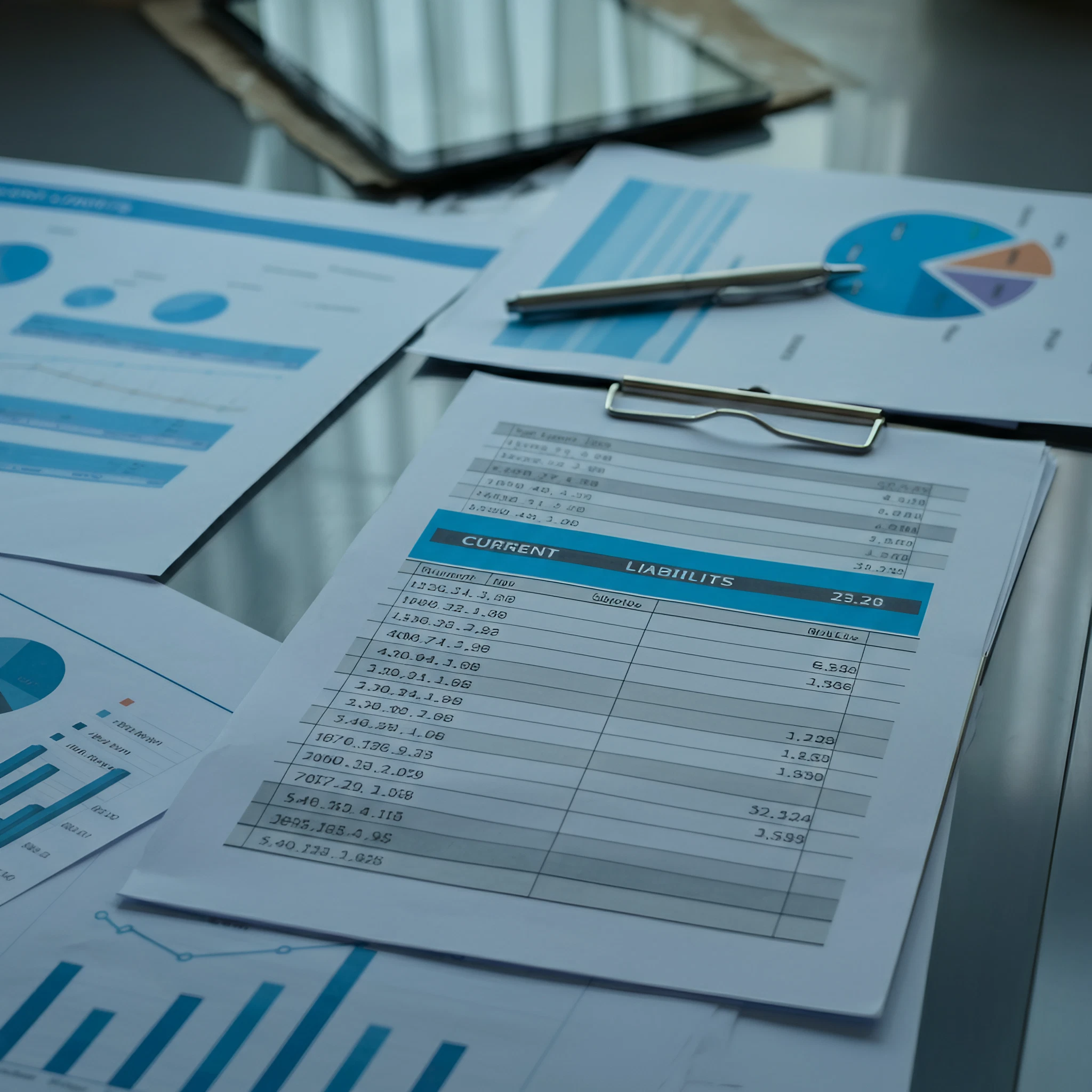Current liabilities play a critical role in assessing a company’s short-term financial health. Whether you’re managing the books for your small business, analyzing financial statements in a classroom, or optimizing cash flows as an accountant, understanding the components of a current liabilities list is essential.
This article dives into the core components that make up current liabilities, their significance, and how they can influence financial decision-making.
What Are Current Liabilities?
Current liabilities are short-term financial obligations that a company is expected to settle within one year. Typically listed on the balance sheet, these liabilities are paid using current assets like cash or revenue generated by day-to-day operations.
Understanding your company’s current liabilities is vital for maintaining proper liquidity and ensuring that your business can meet its short-term financial obligations without disrupting operations.
The Importance of a Current Liabilities List
For accountants and small business owners, maintaining an updated current liabilities list provides visibility into upcoming financial obligations. It helps in financial planning, improving cash flow management, and understanding the company’s short-term debt profile.
For finance students, knowing the components of current liabilities lays a strong foundation for analyzing financial statements and determining liquidity ratios, such as the current ratio or quick ratio.
Contrasting with Long-Term Liabilities
Unlike current liabilities, long-term liabilities involve obligations that are due beyond the one-year timeframe, such as long-term loans or bonds payable. Distinguishing between these categories is important for accurate financial analysis.
Breaking Down the Current Liabilities List
1. Accounts Payable
Accounts payable (AP) refers to the debts owed by a business to its suppliers or vendors for goods and services received but not yet paid for.
- These payments are generally due within 15, 30, or 45 days, depending on the agreed terms with the supplier.
- Managing accounts payable effectively can boost short-term liquidity by allowing businesses to defer payments without incurring penalties.
Example: A company purchasing office supplies on credit records this on the balance sheet as accounts payable.
2. Accrued Expenses
Accrued expenses are costs that have been incurred but not yet paid. Under the accrual accounting method, these are recognized as liabilities when incurred, not when paid.
- Examples include unpaid salaries, accrued interest, or utility bills that haven’t been settled.
Key Benefit: Accrual accounting provides a more accurate picture of financial health compared to cash-based accounting.
3. Taxes Payable
Businesses are legally obligated to pay various taxes. These are categorized as taxes payable under current liabilities.
- Common types include income taxes, payroll taxes withheld from employees, and sales taxes collected from customers.
Scenario: A business collects sales tax from customers and retains it until the payment is submitted to the government.
4. Short-Term Debt
Short-term debt includes all debt obligations that are due within the next year. This may encompass short-term loans, overdraft facilities, or the current portion of long-term debt.
- Companies often need to juggle short-term debt repayments with maintaining enough cash to meet operational needs.
Example: A retailer utilizing short-term bank loans to cover seasonal inventory purchases.
5. Payroll Liabilities
These are obligations related to employee compensation, including salaries, wages, and employer contributions to retirement plans, Medicare, and health insurance premiums.
Importance: Accurate payroll liability management ensures employee satisfaction and compliance with labor laws.
6. Dividends Payable
If a company has declared dividends but not yet distributed them to shareholders, the amount owed appears on the current liabilities list as dividends payable.
Example: A corporation announces a quarterly dividend, which remains unpaid until a future date.
7. Unearned Revenue
Unearned revenue, or deferred revenue, is money received in advance for goods or services that are yet to be delivered.
- Once the performance obligation is fulfilled, this liability is converted into earned revenue and recorded on the income statement.
Scenario: A subscription-based business collects advance payments for annual memberships, classifying these as unearned revenue initially.
Why Maintain a Precise Current Liabilities List?
Financial Analysis
Key metrics like the current ratio (current assets ÷ current liabilities) rely heavily on the accuracy of your liabilities list. A ratio above 1 indicates strong liquidity, while a lower ratio might signal potential solvency issues.
Cash Flow Management
An updated current liabilities list helps small business owners plan for upcoming payments, mitigate late fees, and maintain smooth operations.
Investor and Creditor Confidence
For external stakeholders like investors and creditors, analyzing current liabilities reveals how well a company manages its short-term obligations. Consistent performance builds trust and makes it easier to secure financing.
Tips for Managing Current Liabilities
- Monitor Regularly
Keep the current liabilities list updated to avoid missed payments and ensure compliance. Tools like accounting software can automate tracking.
- Optimize Payment Terms
Negotiate favorable terms with vendors, such as extended payment deadlines or early payment discounts, to improve cash flow.
- Leverage Short-Term Financing Strategically
If needed, use short-term loans to bridge gaps in working capital, but manage repayments carefully to avoid financial strain.
- Revisit Tax Strategies
Work with an accountant to ensure your business is taking advantage of any available tax credits or deferrals.
Final Thoughts
Understanding the components of a current liabilities list is essential for maintaining a strong financial position. From accounts payable to unearned revenue, these items directly influence your company’s liquidity and short-term strategies.
If you’re just starting out, ensuring that all current liabilities are accurately recorded and managed is the first step to building financial resilience. For accountants and students, mastering these concepts is fundamental to analyzing balance sheets and assessing financial health.
For small business owners seeking an efficient way to stay on top of liabilities, consider using professional accounting tools to streamline and automate the process. After all, being proactive with your liabilities today will save you from unnecessary risks tomorrow.








